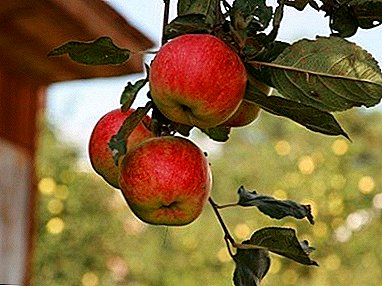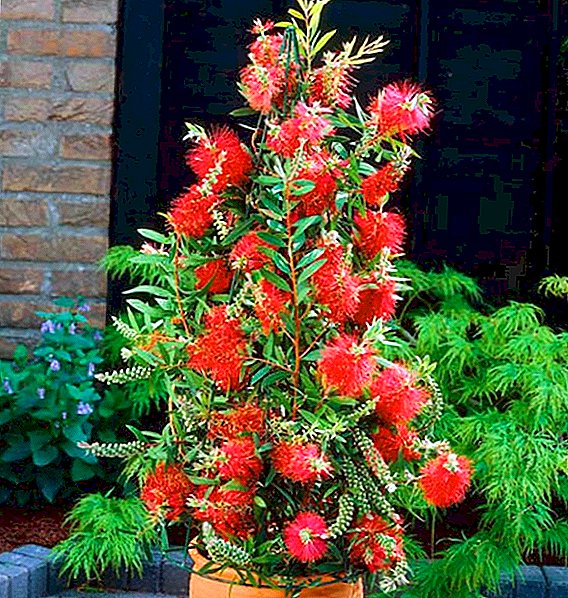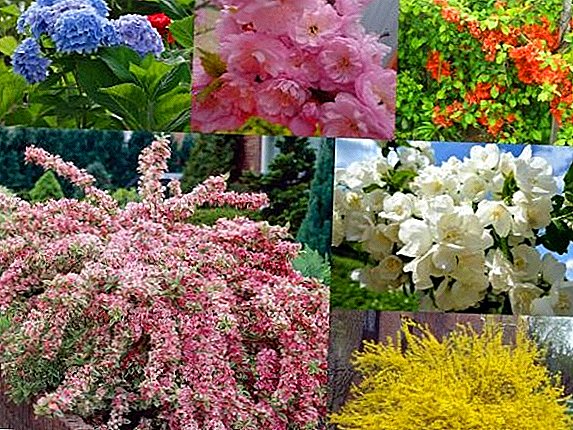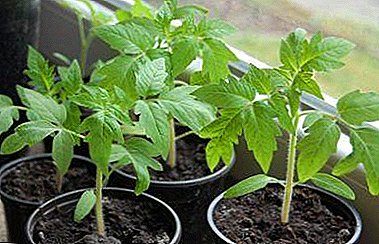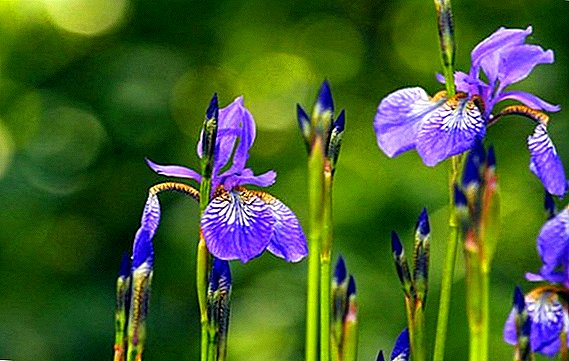 One of the rules for the care of flowers is a constant and timely transplanting them. You need to know when it is better to move the flower to a new place, how to choose the right place, what you need to work and how to conduct the transplant process. Most gardeners, both beginners and experienced, are interested in the question of when and how to replant common iris flowers. We will tell you about their transfer to a new place in the autumn, the subsequent care, and the necessary rules to be followed.
One of the rules for the care of flowers is a constant and timely transplanting them. You need to know when it is better to move the flower to a new place, how to choose the right place, what you need to work and how to conduct the transplant process. Most gardeners, both beginners and experienced, are interested in the question of when and how to replant common iris flowers. We will tell you about their transfer to a new place in the autumn, the subsequent care, and the necessary rules to be followed.
Why and after how much you need to transplant to another place
In order for the bushes to grow and bloom well, they need to create a comfortable environment. To transplant flowers to a new place, you need to choose a site on which there is a lot of sun, you must have good ventilation.  Under these conditions, irises feel best and bloom profusely.
Under these conditions, irises feel best and bloom profusely.
Did you know? From the Greek language the name of the flowers translates as "rainbow" or "rainbow". This is due to the fact that there are quite a large number of varieties and shades of this flower that are available for purchase and planting.
Planned transplantation should be carried out at least every three or four years. The best time for a flower to master the new soil is spring, when the active phase of leaf growth begins. But you can make a transplant in the fall.
When to plant irises in the fall
The best time to change the place of residence will be the period after flowering or vegetation. If transplanted irises in the process of flowering or too late after it, then they probably will not tolerate transplants.
Learn more about the cultivation of irises, about the most popular varieties, especially about such as bearded iris, Siberian iris.If the summer is very hot and dry, the best time to change places will be the last days of August or the beginning of autumn.
 At this time, also comes the phase of growth of the plant, and it can take root in the new conditions.
At this time, also comes the phase of growth of the plant, and it can take root in the new conditions.It is worth choosing the time at the beginning of autumn - it is best to get down to business in September, while it is still warm. But in late autumn, after mid-October, transplantation is not recommended - the iris may not settle down and fade.
It will also be useful for you to learn about the most common diseases and pests of irises, what to do if irises do not bloom.
Transplantation in the fall has several advantages: at this time, the rhizomes are not forced out, which means it does not reduce the duration and abundance of flowering. Also during this period, the bush grows well, you can sit after that or leave to bloom and get a large number of flowers.
Choosing a place on the site
When choosing a site, it should be remembered that these flowers are light-loving, therefore it is recommended to select a site with good access of light and wind, preferably without shadows and excess moisture.  If there is too much water in the soil, it can lead to root rot or mold and other diseases. Therefore, you need to monitor the groundwater level at the new location.
If there is too much water in the soil, it can lead to root rot or mold and other diseases. Therefore, you need to monitor the groundwater level at the new location.
Important! Iris is a very frost-resistant flower, so it can winter in open soil of any composition.
It is not recommended to plant the bush in heavy and sour soil. The best option is to place a young plant in a loamy soil with a neutral reaction.
The lighting should be bright enough, the bushes also like ventilated places, but not with strong wind. It should be remembered that the site for planting must be prepared in advance, digging the soil.
Preparatory work
There are mandatory steps that should be followed when transferring to a new location. After selecting it, the soil is prepared and fertilized, in addition, the plant itself is prepared. 
Soil preparation
Place under the flower should dig in advance, at least a week or two. Ideally, such training is carried out even a few weeks before the planned movement of irises. They dig a hole about twenty centimeters deep, that is, in a bayonet of a shovel.
If necessary, sand with peat is applied to the soil. If the soil is too sour, be sure to add at least a handful of lime.
Learn about the importance of soil acidity, how to determine acidity, how and how to deoxidize the soil.
It is important to conduct and fertilizing the land: for this suitable mineral fertilizers, to which the bushes respond well. If you fed iris with one type of fertilizer, then use them.
Mineral fertilizers include Plantafol, Crystal, Kemira, Ammophos, Azofoska, Sudarushka, and Akvarin.Of course, when preparing the soil, all foreign plants should be removed, the place should be cleared of weeds and other root systems.

Plant preparation
If the bushes are already old and very large, it is better to dig them out using forks, slightly planting roots on them. Damage to this case is indispensable, since the roots of the plant are very fragile.
Therefore, if the volume is quite large, you will have to separate them and transplant only some of them. After the main part of the roots that will be transplanted is selected, they can be washed with water.
This will allow you to view the status of the system and determine whether to use these particular controls. Sick, dry and damaged parts are removed.
Important! In order for the plant to tolerate the transplant better and get used to the new conditions, you should stop fertilizing the shrub about a month or two before the planned date of relocation.
 The leaves should also be cut - always at an angle of 1/3 to form a kind of fan. After that, it is worthwhile to carry out disinfection of rhizomes and leaves in a solution of potassium permanganate or a special preparation that can be purchased at a garden shop.
The leaves should also be cut - always at an angle of 1/3 to form a kind of fan. After that, it is worthwhile to carry out disinfection of rhizomes and leaves in a solution of potassium permanganate or a special preparation that can be purchased at a garden shop.For transplantation in the fall, you need to choose potash and phosphate fertilizers - nitrogen at this time is not suitable.
Potassium fertilizers include such as "Kalimag", "Kalimagneziya", potassium sulfate, potassium monophosphate, and phosphate fertilizers - superphosphate, double superphosphate.
Organic matter is very poorly tolerated by plants, it is better to add ashes to the hole, about a handful or two, and after that, plant the iris in a new place.
How to plant irises in a new place
At the new place, it is necessary to create conditions for free growth of each bush. So, the land has already been prepared and loosened, it contains fertilizers.
Plants are placed in pits with a depth and width of about 20 centimeters, gently sprinkling with earth to form a small hill. 
Tips to help in planting irises in the fall:
- Do not place the plants too deep, otherwise they will start to rot. The top of the root system should be at ground level.
- Rhizome when planting need to straighten in different directions.
- Choose 3-4 rhizomes for planting.
- All sections must be treated with an antiseptic.
- Choose a dry rather than a rainy day for planting.
- It is not necessary to apply fertilizer directly when planting a plant - there are enough of those that were introduced before preparing the soil.
Did you know? Iris seeds were once considered a very expensive delicacy. They were fried in a special way and served as a treat. And from them they prepared a drink that resembles the taste and color of coffee.
The distance between the holes should be at least 50 centimeters - this will ensure the free growth of bushes in the future. 
Aftercare
It is rarely necessary to water the plants after transplantation, as the cold period is approaching, besides, an excess of moisture will prevent the shrub from taking root. Fertilize also should not be.
After transplantation, dry leaves may appear, but this is quite normal, as the flower only gets used to a new place: fresh brand new leaves will soon grow.
Preparing for wintering plants at this stage ends. Since they are winter-hardy, cover and insulate them to anything, the necessary trimming has already been done. Special care after such a transplant is not necessary.
Irises are very beautiful flowers, easy to care for and maintain. The process of transplanting them is quite simple. The main thing is to choose the right place and its preparation.  If you carry out this process as expected, then the bush will grow well even in the fall and have enough strength to calmly winter and very soon please you with beautiful flowers.
If you carry out this process as expected, then the bush will grow well even in the fall and have enough strength to calmly winter and very soon please you with beautiful flowers.
Feedback from network users




